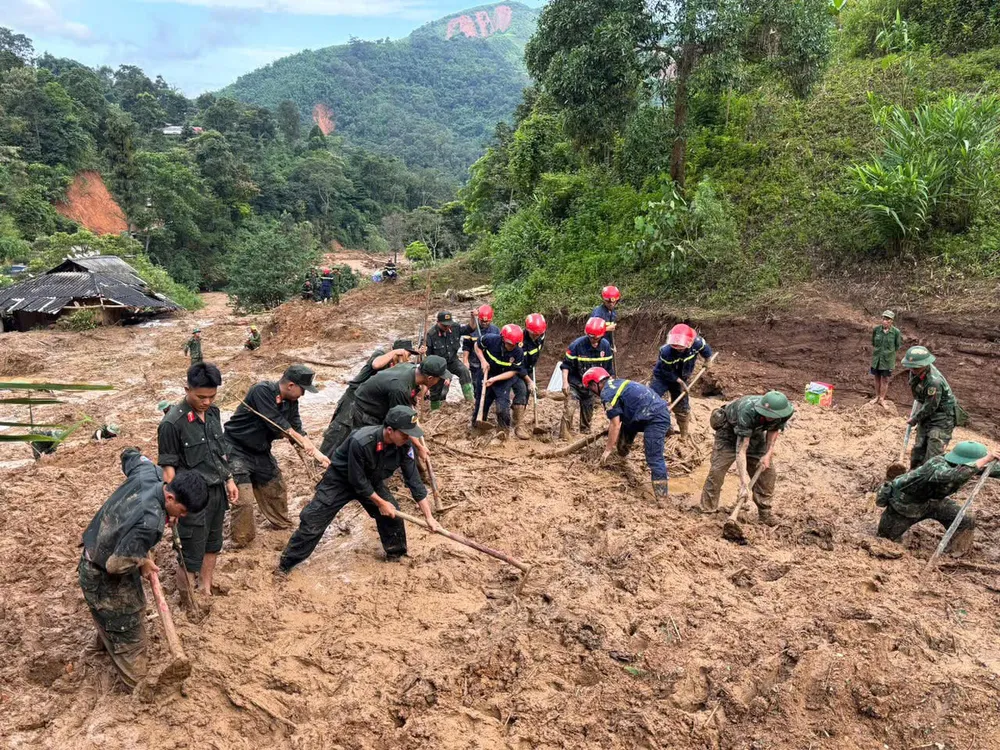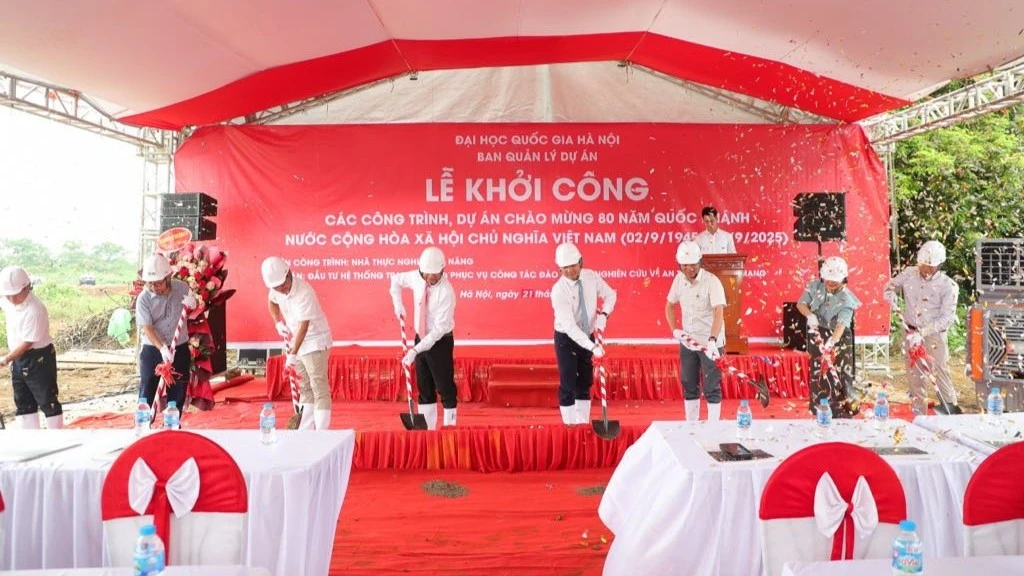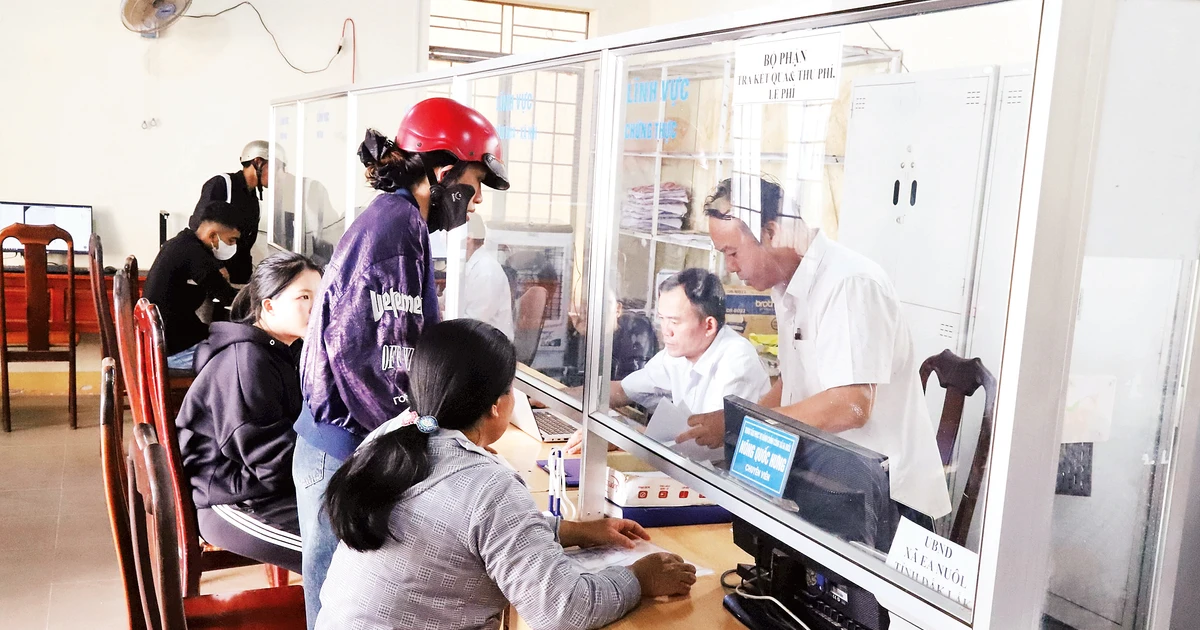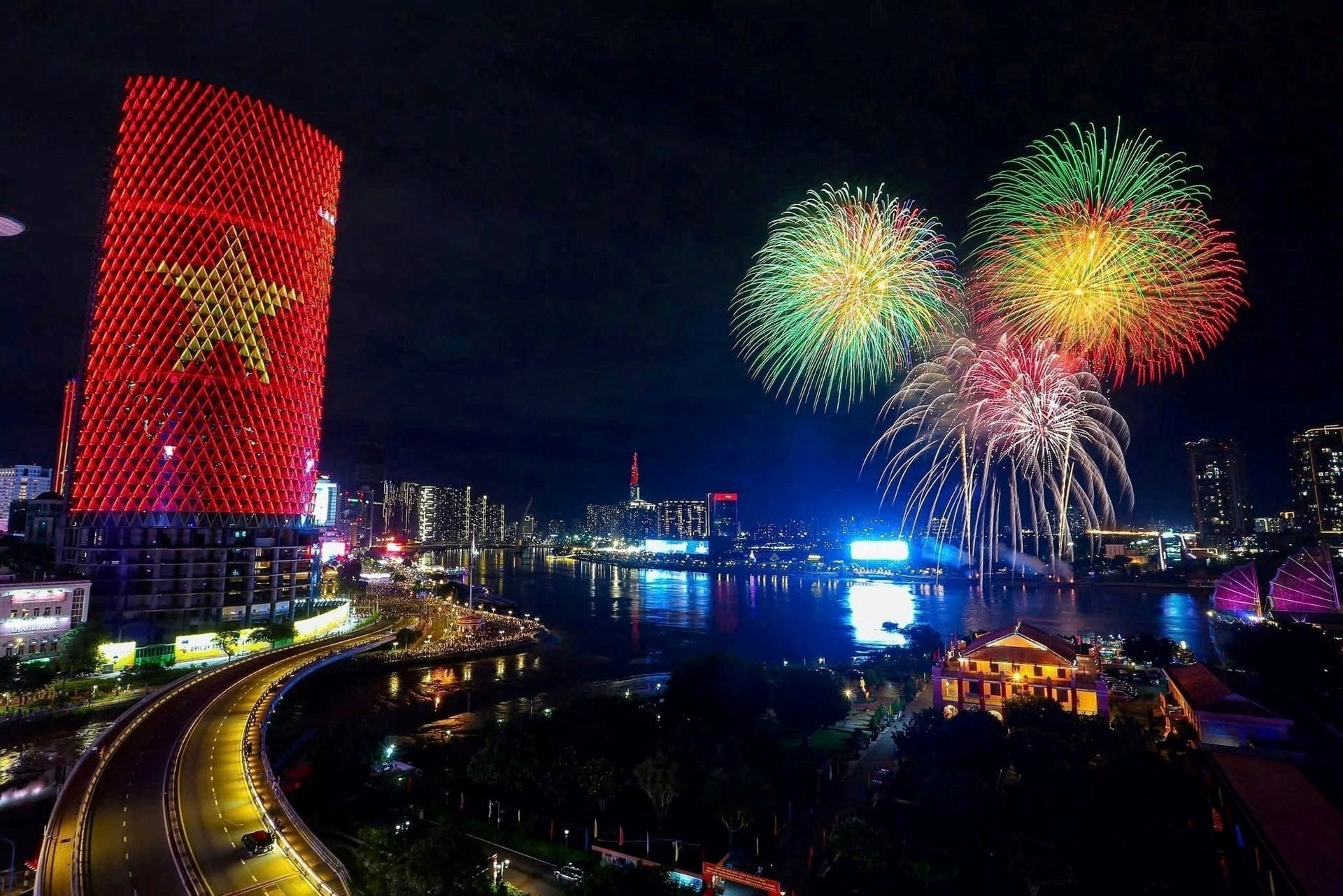According to the Vietnam Road Administration, since the beginning of the year, the impact of heavy rains caused by storms and tropical depressions has caused a lot of damage to the national highway system. Just counting the recent storm No. 3, as of July 29, nearly 200 roads were blocked due to landslides.

Danger lurks
This reality requires urgent, long-term and more systematic investment to minimize damage and maintain a continuous traffic flow in the face of complex natural disasters. Typically, on National Highway 4G through Son La province, many sections have collapsed on both positive and negative slopes, with a huge amount of rock and soil, requiring 3-4 days to clear the road and open it to traffic. Similarly, in Nghe An province, storms have caused landslides and traffic disruptions at 140 points on National Highway 7A and National Highway 16. According to drivers, some national highways are always a nightmare every rainy and stormy season when there are dozens of points that are frequently eroded, causing congestion, flooding, and a very high risk of insecurity, typically National Highway 6, the main route connecting Dien Bien, Son La to Hanoi and National Highway 70 passing through Lao Cai province.
Deputy Director of the Vietnam Road Administration Nguyen Thanh Hoai said that the Ministry of Construction , the Vietnam Road Administration and road management agencies have set up many working groups to inspect localities, deploying immediate handling of key locations at risk of landslides, flash floods, inundation, causing traffic jams, especially for some important routes such as the North-South railway; National Highway 1A, Ho Chi Minh Road; National Highways to the Northwest, Central Highlands... Regarding waterways, the Ministry of Construction has deployed a national response plan for ship accidents at sea; arranged search and rescue ships to be on duty in areas at high risk of accidents and incidents during the 2025 storm season such as: Hai Phong, Nghe An, Da Nang, Nha Trang, Vung Tau to be ready to respond when situations occur at sea.
Although the Vietnam Road Administration, Vietnam Railway Administration, and Vietnam Maritime and Inland Waterways Administration have made many efforts to prevent and combat this problem, the number of traffic works damaged by storms and floods has not decreased, many landslides and flooding still recur in every storm and flood season, and the risk of traffic insecurity still lurks on every road.
Strengthening vulnerable positions
According to Mr. Nguyen Thanh Binh, Standing Member of the Steering Committee for Natural Disaster Prevention and Search and Rescue of the Ministry of Construction, Vietnam currently does not have synchronous warning devices; especially for areas that are often at risk of landslides, mudslides, and flash floods. Meanwhile, deforestation causing flash floods, trees blocking sewers and ditches causing blockages and damage to road infrastructure; illegal leveling, encroachment, connection, dumping of garbage and solid waste into longitudinal ditches and downstream drainage causing blockages of water flows causing localized flooding, and damage to roadbeds and surfaces have not been effectively prevented.
Mr. Tran Van Phu, Head of Nha Trang Tourist Wharf Management Department (under Nha Trang Bay Management Board, Khanh Hoa Province) said that there are currently more than 300 inland waterway vehicles licensed to transport tourists to Nha Trang Bay, mainly high-speed canoes. Therefore, ensuring the safety of tourism activities on the bay is a task that the management board pays special attention to.
In the face of storms and after the tourist boat capsized in Ha Long Bay, the management board has requested organizations and individuals operating inland waterway vehicles to strengthen response to dangerous weather, ensuring safety for people and vehicles; closely monitor weather conditions, check safety conditions before leaving the port, absolutely do not let vehicles leave the port when the weather is bad and proactively bring vehicles to shelters, all decisions must put safety first...
To thoroughly overcome the problem, the Ministry of Construction said it has proposed that the Government prioritize investment to solidify key locations on railways and national highways in mountainous areas that are frequently subject to landslides and flooding, causing traffic jams. The Ministry of Finance will consider and allocate funding for the construction of large SAR rescue ships that can operate long-term and far from shore to ensure more effective search and rescue operations at sea.
According to Deputy Minister of Construction Le Anh Tuan, in the period of 2026-2030, the Ministry of Construction will increase the application of technology, digitize the work of natural disaster prevention, search and rescue; invest in purchasing equipment for hydrometeorological forecasting in a more modern and professional direction, in order to accurately forecast natural disasters, catastrophes, and incidents. Strengthen training and coaching of staff and employees performing civil defense tasks, expand international cooperation in natural disaster prevention and search and rescue.
Need more specific forecast
According to the Ministry of Construction, current regulations allow river-sea-phase vessels (VR-SB) and restricted-sea vessels III (in coastal waters) to operate only in wind conditions below level 5 (good weather) and within 12-20 nautical miles from shore. However, marine weather forecasts issued by the National Center for Hydro-Meteorological Forecasting often cover 2-3 provinces and cities, so they do not accurately reflect actual conditions in the near-shore area (where the above-mentioned types of vessels often operate). Specifically, because the authorities use the highest wind and wave levels in the entire region as the basis for licensing, many vessels are forced to temporarily stop operating even though the weather in the operating area is still safe. This leads to congestion, waste of resources and causes significant losses to coastal transport activities, especially during the peak storm season.
Based on the above practices, the Ministry of Construction has requested the National Center for Hydro-Meteorological Forecasting to provide specialized weather bulletins for nearshore areas, with a narrower forecast scope, specific to each coastal area. According to this agency, improving the detail and accuracy of forecasts will help authorities make more appropriate management decisions, facilitate maritime activities and improve safety during the storm season.
The representative of the Ministry of Construction said that the current information and rescue system is struggling with the gap from the lack of detailed forecasts. Specifically, not only facing difficulties due to the spread of marine weather forecasts, the port authority, maritime rescue and coastal information system in Vietnam is also struggling to support and guide ships through storms and tropical depressions in passive conditions. Currently, maritime port authorities and inland waterways are still closely monitoring the situation of ships entering and leaving ports, closely coordinating with local disaster prevention and search and rescue command boards to guide ships to anchorage. This force plays a key role in coordinating waterway traffic, especially in key water areas during the rainy and stormy season.
The Ministry of Construction as well as the Ministry of Agriculture and Environment believe that, in the context of complex weather developments, improving and ensuring the quality and details of coastal weather reports will not only help ships operate safely, but also significantly reduce the load on the waterway traffic management and rescue system.
Participating in the current maritime disaster response system is the coastal information station network. This network still has to maintain a 24/7 watch mode, continuously broadcasting warning signals, announcing the path of storms and depressions to warn ships not to enter dangerous areas. From November 2023 to the end of 2024 (data for the first 7 months of 2025 is not yet available), this system has received and processed 1,112 emergency information, supported 237 rescue missions, helped 427 Vietnamese ships, 572 foreign ships and a total of 1,143 people in distress at sea.
Currently, the Vietnam Maritime Search and Rescue Coordination Center also regularly arranges specialized rescue vehicles at key points. Over the past year, this force has directly rescued 83 people, including 13 foreigners, and coordinated with other units to rescue 930 more people, including 166 foreigners. The above figures are not to report achievements but to show the increasing pressure on the rescue force, especially when forecasting work is not really synchronized with the needs of maritime operations.
Source: https://www.sggp.org.vn/an-toan-giao-thong-mua-mua-bao-de-ha-tang-giao-thong-tru-duoc-voi-thien-tai-post808082.html





























![[Photo] An Phu intersection project connecting Ho Chi Minh City-Long Thanh-Dau Giay expressway behind schedule](https://vstatic.vietnam.vn/vietnam/resource/IMAGE/2025/8/21/1ad80e9dd8944150bb72e6c49ecc7e08)































![[Photo] Politburo works with the Standing Committee of Hanoi Party Committee and Ho Chi Minh City Party Committee](https://vstatic.vietnam.vn/vietnam/resource/IMAGE/2025/8/21/4f3460337a6045e7847d50d38704355d)
































Comment (0)